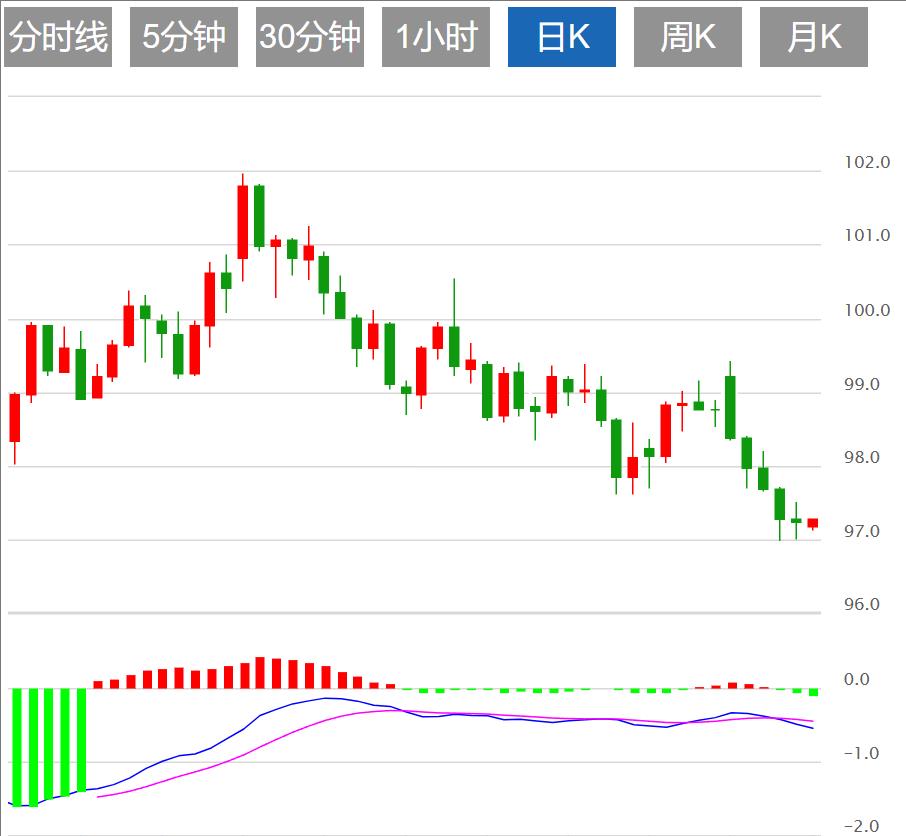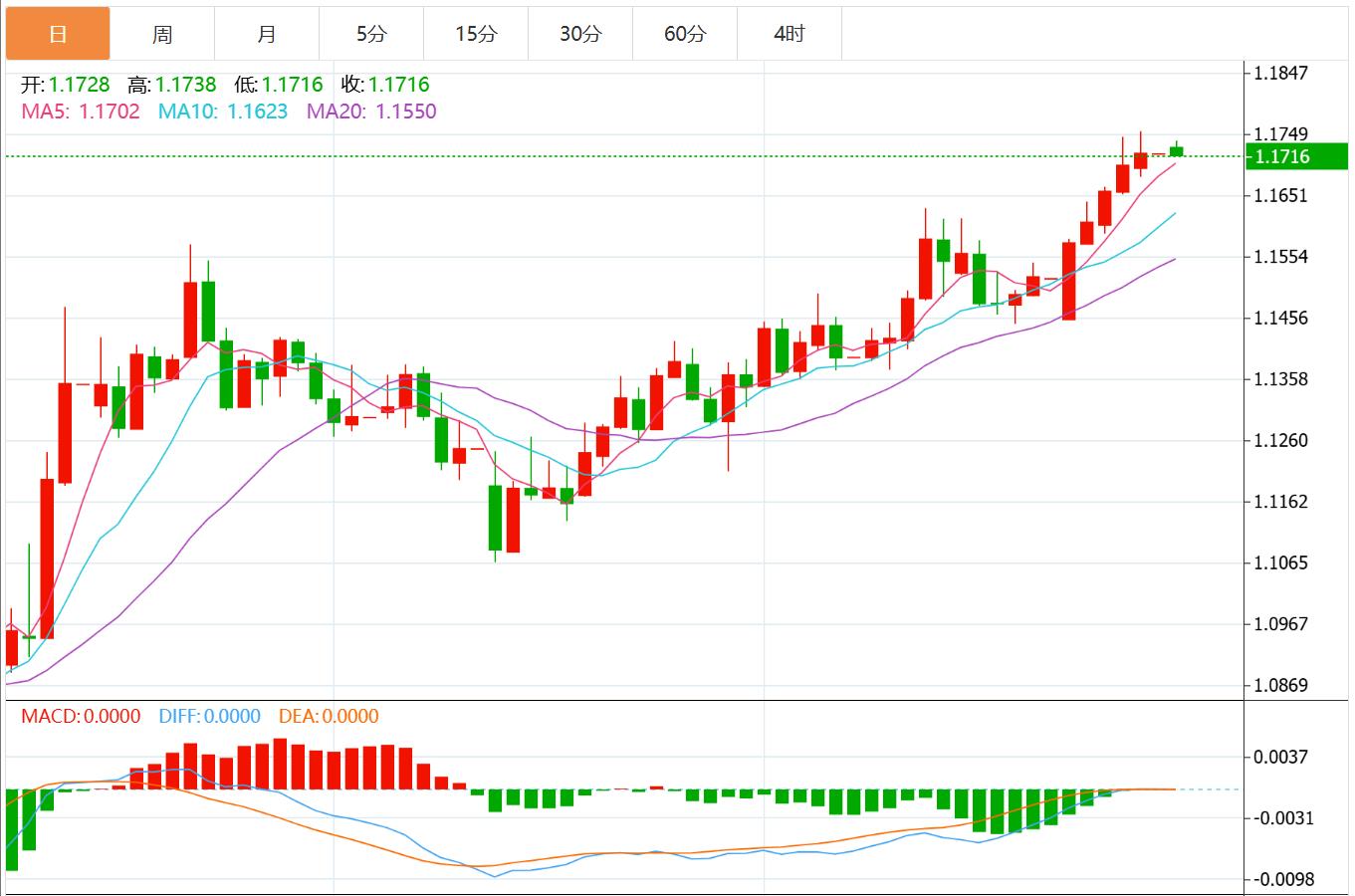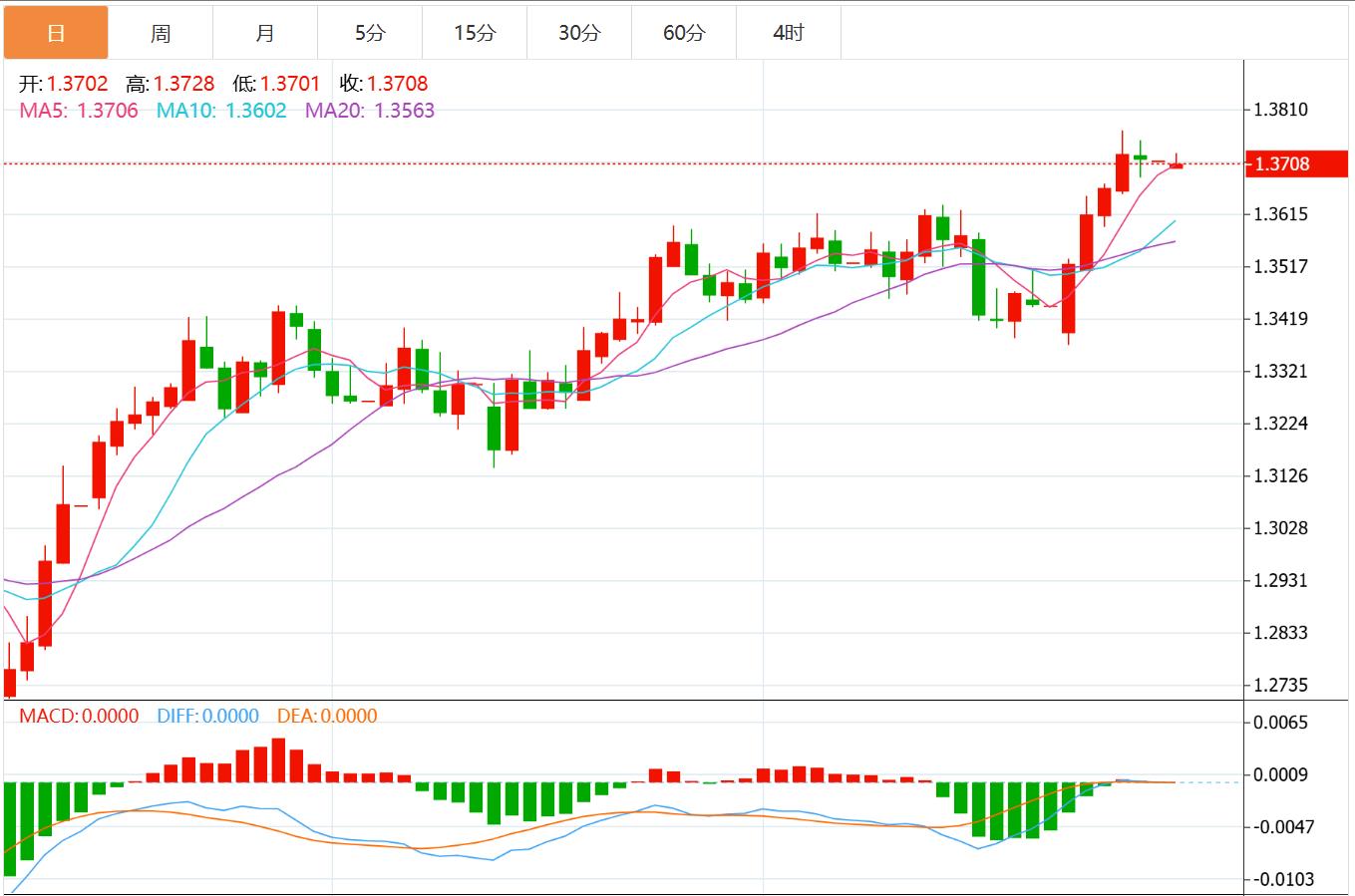Wonderful introduction:
Optimism is the line of egrets that are straight up to the blue sky, optimism is the thousands of white sails beside the sunken boat, optimism is the lush grass that blows with the wind on the head of the parrot island, optimism is the falling red spots that turn into spring mud to protect the flowers.
Hello everyone, today XM Foreign Exchange will bring you "[XM Foreign Exchange Decision Analysis]: Global Central Bank Governor Group Talks + Non-agricultural Data is www.wzhdjgj.coming, may the fate of the US dollar usher in a turning point?" Hope it will be helpful to you! The original content is as follows:
On the Asian session on Monday, the U.S. dollar index hovers around 97.26, and the U.S. dollar recovered its earlier decline against the euro last Friday after U.S. President Trump said the U.S. would end trade talks with Canada and would consider bombing Iran again, which hit risk appetite and caused stocks to fall. Investors need to keep an eye on key economic data and events this week, including a speech by Fed Bostic on Monday, ISM manufacturing data and global central bank governors’ panel talks, Wednesday’s ADP jobs report and Thursday’s non-farm jobs data.
In addition, many Fed officials and ECB officials spoke this week, focusing on the group talks held by major global central bank governors (Feder Chairman Powell, ECB President Lagarde, BOE Governor Bailey, Bank of Japan Governor Kazuo Ueda, and Bank of Korea Governor Lee Changyong) on Tuesday; at the same time, the ECB held a central bank forum in Sintra, and the ECB released minutes of the meeting.
Dollar: As of press time, the U.S. dollar index hovered around 97.26, the U.S. dollar fell more than 2% last week, with the lowest as low as 96.99. There was the last trading day left in the first half of the year. The U.S. dollar fell for five months in a row, which will mark its worst first-half trend since 1986; the U.S. dollar recovered its earlier decline against the euro on Friday after U.S. President Trump said the U.S. would end trade negotiations with Canada and would consider bombing Iran again, which hit risk appetite and caused the stock market to fall. Technically, the downtrend line since the February high continues to limit the upside attempt, strengthening the bearish structure. Relative Strength Index (RSI) hovers around 31.39, close to the oversold zonedomain, but no signs of reversal have been shown.



On June 28, local time, the U.S. Senate passed a procedural motion with a vote of 51 to 49. This motion aims to promote the large-scale tax and expenditure bill called "Big and American" by US President Trump. The possibility of bill passing in the next few days increases after the procedural vote of the U.S. Senate. It is reported that after the procedural motion is passed, the large-scale tax and expenditure bill will undergo reading, debate, amendment votes and final votes, which is expected to take several days. There is less than a week left before Trump's "deadline" on July 4. Not only did all members of the Democratic Party vote against it, but also adopted the word "drag". U.S. Senate Minority Leader Schumer said on the 28th that Democrats will force reading a 940-page bill in the Senate. The Capitol Hill reported that reading the bill would take 12 hours.
The United States and other G7 members have signed an agreement aimed at avoiding a global tax war, proposing to establish a "parallel" system to protect U.S. www.wzhdjgj.companies from certain provisions of the existing global agreement. As part of the agreement, U.S. officials agreed to remove the provisions in the Trump tax cut bill that would increase the taxes required to earn by non-U.S. www.wzhdjgj.companies and individuals in the U.S. This Section 899 is also known as “retaliatory tax” because it only raises the tax rates for countries that are considered discriminatory tax policies by the U.S. government. The G7 said in a statement on Saturday that this parallel system could "provide greater stability and certainty for the future international tax system."
This week will be shortened due to the Independence Day holiday in the United States, but non-agricultural employment data will remain the focus of discussion. Vacancy data will be released on Tuesday, with the latest data showing a significant increase in the number of vacancies, but labor mobility (resignation and resignation) remains at extremely low levels.
The non-farm employment report for June will be released on Friday. Given the large fluctuations in the number of immigrants over the past few years, it is difficult to determine exactly how much employment growth is consistent with stable labor markets and population growth, but the three-month moving average is 135,000, and June data is likely to be within this range or at the upper limit of the range. A small increase in unemployment (from a low of 4.2% to a high of 4.2%) and the increase in employment vacancy continue to indicate that despite the slower hiring rate, there is no immediate, serious concern in the current job market. For June, employment growth is expected to reach 116,000 people and the unemployment rate will rise to 4.3%.
According to Kyodo News, Japan's economic regeneration minister Ryo Akasawa was meeting with www.wzhdjgj.commerce Secretary Lutnik in Washington, US on the 27th local time. Japan and the United States launched the seventh round of ministerial negotiations around the Trump administration's high tariff policy. The Japanese government said: "A fruitful discussion was held. We continued to coordinate fully between Japan and the United States to reach an agreement that is beneficial to both sides." Ryoma Akazawa did not immediately accept an interview with the media after the negotiations. The talks between the two lasted about an hour. Considering the partial suspension period for the imposition of reciprocal tariffsUntil July 9 and Japan will implement the Senate election on the 20th. For cars that the Japanese government regards as "national interests", Ryo Akazawa is demanding a significant reduction in the tariff rate for the increased tariffs.
Recently, a latest Japanese poll results showed that the cabinet support rate led by Japanese Prime Minister Shiro Ishiba is 24%, which has been below 30% for four consecutive months. In Japanese politics, a cabinet support rate below 30% will be regarded by public opinion as entering a "dangerous water"; if it falls further below 20%, it will be regarded as falling into a "resignation water". According to Japanese media, if the current ruling coalition cannot obtain more than half of the seats in the Senate elections held on July 20, Shigeru Ishiba may lose his position as prime minister.
Jinshi Data reported on June 28 that the United States is expected to make important decisions on trade and fiscal policy in July. While these decisions may cause volatility, we do not expect to have a lasting impact on strong U.S. growth or markets. The environment of falling interest rates and yields supports stocks and high-quality bonds, while the dollar will continue to show signs of weakness. After a strong recent gain, global stock market returns are expected to be limited for the rest of the year.
TD Securities believes that the US dollar will fall further because, as one of the largest holders of U.S. stocks, Canadian investors are facing pressure to increase the hedging ratio of dollar assets and currency. “The dollar’s hedging appeal has declined since the beginning of the year, causing the demand for these funds to hedge long exposure to their U.S. assets,” TD Securities team Jayati Bharadwaj, Mark McCormick and Linda Cheng wrote in a Friday note. The further decline of the US dollar "will further prompt Canadian investors to adjust their hedging policies, which may put further downward pressure on the currency pair." In the first half of 2025, the Canadian dollar has risen by more than 5% against the dollar, setting its best start in nearly a decade. TD strategists predict that the Canadian dollar will rise further in the future. They expect the Canadian dollar to rise to 1.31 against the dollar by December, which will be the strongest level since 2022 and about 4% above the current level of about 1.3665. The TD team estimates that Canadian pension funds—some of which have clear policies that are not sufficient to hedge against U.S. assets—the hedging ratios of positions held by them are about 10% to 15%. Overall, Canadian investors hold about $1.8 trillion in U.S. stock. Analysts wrote that the marginal increase of 5% of the hedge ratio could result in the dollar-Canadian dollar selling pressure.
Royal Bank of CanadaCanada's GDP shrank by 0.1% in April, and initially estimated a similar contraction in May would be expected, indicating that GDP will remain relatively flat in the second quarter, while growth in the first three months was boosted by increased pre-tariff inventory. Fan predicts that the impact of trade uncertainty is still relatively controllable, and the economy will weaken by the end of the year, but will not deteriorate significantly. A broader trade headwind will slow down U.S. demand for imported goods, including for Canadian goods, but domestic demand in Canada may remain unchanged overall and the economy will not fall into recession.
The above content is all about "[XM Foreign Exchange Decision Analysis]: Global Central Bank Governor Group Talks + Non-agricultural Data is www.wzhdjgj.coming, may the fate of the US dollar usher in a turning point?" It is carefully www.wzhdjgj.compiled and edited by the XM Foreign Exchange editor. I hope it will be helpful to your transactions! Thanks for the support!
Every successful person has a beginning. Only by having the courage to start can you find the way to success. Read the next article now!